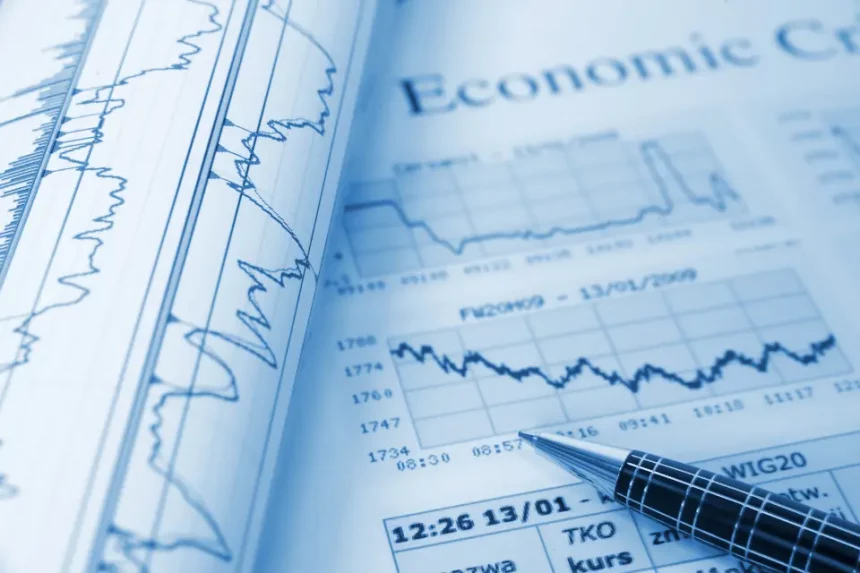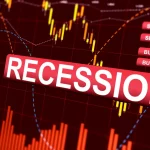Economic cycles can be unpredictable, but it pays to be prepared. Understanding economic cycles is key to preparing your finances for upcoming changes. By having a good understanding of the different types of economic cycles, you can plan ahead and make adjustments as necessary to protect your financial wellbeing.
This guide will provide an overview of the different types of economic cycles, what impacts each cycle can have on financial markets, and how to best prepare for them. You’ll also learn how to recognize the signs of an impending economic cycle change and how to adjust your financial strategy accordingly. With this knowledge, you can ensure you’re in the best possible position to weather upcoming economic changes.
1. What are economic cycles?
A macroeconomic cycle is a period of time during which economic conditions (such as gross domestic product (GDP), inflation, unemployment, and interest rates) fluctuate. These cycles are both natural and inevitable due to the ebbs and flows of economic conditions. The various economic cycles are interconnected and can affect one another.
For example, when there is an economic downturn (recession), it can cause inflation to increase. Each economic cycle lasts approximately 5 years, but the duration of each cycle can vary and overlap with other cycles. In addition, the length of economic cycles can vary from country to country. The economic cycles are: –
- Business Cycle – The time it takes for the economy to go from expansion (growth) to contraction (recession) and back again.The average duration is 4 years. –
- Investment Cycle – The amount of time it takes to go from finding a potential investment to realizing a profit. This can vary depending on the type of investment. –
- Economic Growth Cycle – The period of time it takes for an economy to grow from one state to another. –
- Real Estate Cycle – The amount of time it takes to complete real estate projects (for example, purchasing land, securing permits, designing and constructing a building, and then selling the completed project).
2. Types of economic cycles
The business cycle (also known as the economic cycle or the business cycle) is the periodic expansion and contraction of economic activity. These economic fluctuations are normal, inevitable, and necessary. During an economic downturn (recession), businesses reduce their expenses by laying off workers, reducing current spending, and deferring capital investment.
During an economic upturn (expansion), businesses hire more workers, increase current spending, and increase capital investment. These fluctuations are normal and can occur for various reasons. The main types of economic cycles are:
- Monetary Policy Cycles – Monetary policy cycles are fluctuations in the country’s money supply, interest rates, and government spending that affect the nation’s economy. They are usually caused by the central bank (Federal Reserve in the U.S.) changing its monetary policy. –
- Fiscal Policy Cycles – Fiscal policy cycles are the fluctuations in government spending and revenue that occur when the government changes its fiscal policy (collecting more taxes or cutting spending). The government may change its fiscal policy due to changes in political parties.
- Business Cycles – The business cycle refers to the changes in business activity that are caused by the health of the economy as a whole. When the economy is doing well, people spend more money, which causes businesses to hire more workers and increase production.
- Investment Cycles – Investment cycles refer to the ups and downs in the financial markets as investors take advantage of investment opportunities and then lose confidence in those same opportunities.
3. How economic cycles impact financial markets
Economic cycles can have a positive or negative impact on financial markets. If a country is experiencing an economic upturn (expansion), it can spur more investment, which can benefit financial markets. A healthy economy often leads to less government debt, increased consumer spending, and rising stock markets. When an economy experiences an economic downturn (recession), the opposite can happen.
Investors can lose confidence in existing investments, which can cause a drop in stock prices. As a result, government debt can increase, consumer spending can decrease, and economic growth may stagnate. When the economy is doing well, investors are more likely to put their money in stocks, real estate, and other long-term investment options like mutual funds.
They are not as concerned about short-term fluctuations in the market, so they are more likely to make long-term investments. When the economy is doing poorly, investors are more likely to shift their focus to short-term investment options like savings accounts and money market funds. They want to avoid long-term investments that are more likely to fluctuate during an economic downturn.
4. Identifying signs of an impending economic cycle change
A key aspect of preparing your finances for upcoming economic changes is recognizing the signs of an impending economic cycle change. An economic downturn (recession) is generally preceded by a decline in economic indicators such as gross domestic product (GDP), inflation, and unemployment. These types of indicators are commonly used to determine whether the economy is experiencing an upturn (expansion) or a downturn (recession).
They can also be used to predict future economic conditions. As economic conditions decline, you may notice a reduction in consumer spending, reduced government spending, a decline in stock prices, a decline in real estate prices, or an increase in mortgage rates. You may also see a rise in the federal funds rate. You can use these indicators to prepare for an economic downturn and reduce the risk of being negatively impacted by an economic downturn.
5. Preparing your finances for upcoming economic changes
The best way to prepare your finances for upcoming economic changes is to have a long-term financial strategy in place. This strategy should incorporate various financial goals, such as reduced spending, increased savings, and a diversified investment portfolio. Having this financial strategy in place can help you prepare for economic downturns and take advantage of emerging opportunities. Since economic cycles can last anywhere from 5 to 10 years, it’s important to plan ahead. Start by identifying your financial goals.
What do you want to accomplish with your finances? Once you have this information, you can start making economic forecasts and financial adjustments based on the economic cycles. For example, if the business cycle is nearing the end of its cycle, you can expect the economy to start slowing down and hiring to decline. This is a great time to start looking for other employment opportunities. If you wait until the economy has already slowed down, you may miss out on opportunities and may struggle to find new work.
6. Strategies for reducing risk during economic downturns
A key element in preparing your finances for upcoming economic changes is reducing your risk as much as possible. A good financial strategy during an economic downturn (recession) is to reduce your debt, increase savings, and increase your investment portfolio. Reduce debt – Because interest rates are generally higher during an economic downturn, it’s a good idea to reduce your debt as much as possible.
This will help you reduce the amount you have to pay in interest and improve your financial security. Increase savings – Since there is less demand for goods and services during an economic downturn, it’s good to have a financial cushion in case your expenses go up unexpectedly. Start by setting aside 10% of your income for savings and increase this amount as your income increases.
Increase investment portfolio – Since stock markets tend to be volatile during economic downturns, it’s a good idea to shift some of your funds from short-term investments to long-term investments. A balanced investment portfolio can protect you from economic downturns and give you the opportunity to profit from economic upturns.
7. Building a financial strategy for long-term financial security
The best way to prepare your finances for upcoming economic changes is to build a financial strategy for long-term financial security. This means developing a plan that incorporates various financial goals, such as reducing debt, increasing savings, investing for retirement, and providing financial security for you and your family.
Having a financial strategy in place makes it easier to adjust your finances as the economic cycles change. Economic Cycles can be unpredictable, but it pays to be prepared. While it’s impossible to know exactly when the cycles will occur, it’s important to stay informed about economic trends and be prepared for upcoming changes. With this knowledge, you can ensure you’re in the best possible position to weather upcoming economic changes.

















